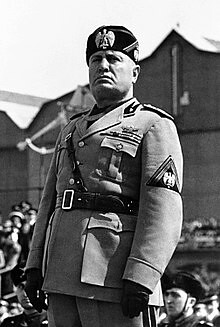World War II: The Battle of Britain ends, causing Germany to abandon Operation Sea Lion.
The Battle of Britain was a pivotal air campaign during World War II that took place between July and October 1940. It was a significant conflict between the Royal Air Force (RAF) of the United Kingdom and the German Luftwaffe, as they vied for control of the skies over Britain. This battle is considered a critical turning point in the war, as it marked the first major defeat for Nazi Germany and thwarted its plans for an invasion of Britain.
Background: The Battle of Britain was a direct result of the larger conflict of World War II. After the fall of France in June 1940, Britain stood alone against Nazi Germany, and Adolf Hitler considered the invasion of the British Isles. However, control of the skies was essential for any successful invasion, and the Luftwaffe was tasked with achieving air superiority.
The Blitz: The Battle of Britain began with a period known as “The Blitz” in which the Luftwaffe conducted a sustained bombing campaign against British cities and military installations. This campaign was intended to weaken British resolve and military capabilities.
Key Leaders: On the British side, Air Chief Marshal Hugh Dowding was responsible for the RAF’s defense strategy, and Sir Winston Churchill, the Prime Minister, provided strong leadership and inspiration during this critical time. The Germans were led by Hermann Göring, head of the Luftwaffe.
Tactics: The RAF employed a combination of fighter aircraft, including the Supermarine Spitfire and the Hawker Hurricane, and a well-organized air defense system. They used a strategy known as the “Big Wing,” which involved sending large formations of fighters to intercept German bombers and their escorts. The Germans, on the other hand, relied on a strategy that targeted the destruction of RAF airfields and infrastructure.
Radar: One crucial advantage the British had was radar technology, which allowed them to detect incoming enemy aircraft at greater distances. This early warning system was vital in allowing the RAF to scramble its fighters and prepare for enemy attacks effectively.
The Turning Point: The Battle of Britain reached its climax in September 1940. A series of intense air battles, including “Eagle Day” on September 13, saw heavy losses on both sides. However, the RAF was able to repel the Luftwaffe’s attacks, and the Germans began to shift their focus toward London and other cities.
Victory and Legacy: By the end of October 1940, the Germans had suffered unsustainable losses, and Hitler decided to postpone Operation Sea Lion, the planned invasion of Britain. The Battle of Britain was a significant British victory, and it marked a turning point in the war. It also demonstrated that Nazi Germany could be defeated and boosted British morale



